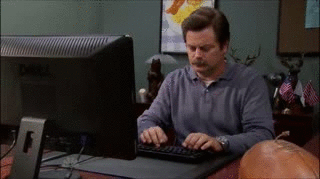Sometimes I wish biology was colorless:

But most of the time it really isn't an issue at all! Either I've had phenomenally patient lab partners (like Julia) who are glad to help me out along the way, or I've been able to get away without really knowing what color I'm looking at. In either case, everything works out in the end. (In all honesty, though, I do make sure to understand what I am looking at before moving on to something new: stained comets, for example).
The reason I bring this up is solely to explain how positive of an all-around experience 20.109 has been thus far. Regardless of any lack of previously knowledge -- color-related or otherwise -- the 109 staff is always ready and willing to clarify a difficult concept or walk through an unclear technique. This has been an incredible help for me because this is the first real entirely lab-based class I've ever taken, and knowing that the staff has my back every step of the way is remarkably reassuring.
I can think back to Sean's BE Comm Lab discussion about creating presentation slides as a particular instance of this. Oftentimes science professors or teachers will blow past the concept of presenting with the specific audience in mind. Not here. He even mentioned to keep us color-blind folk in the back of our heads :) (Small gesture. Meant a lot.)
So while looking at the following gifs (a pulsating culture of stained cellular stuff and a swirling array of deadly colorful teardrops) might give me a headache and some minor anxiety, I can rest assured knowing my peers and teachers in this lab are there to support me through any challenge that has and will come my way...with colors, with CRISPR, and with anything in between.


<3 David







 And not yet drained by 20.320....
And not yet drained by 20.320....









